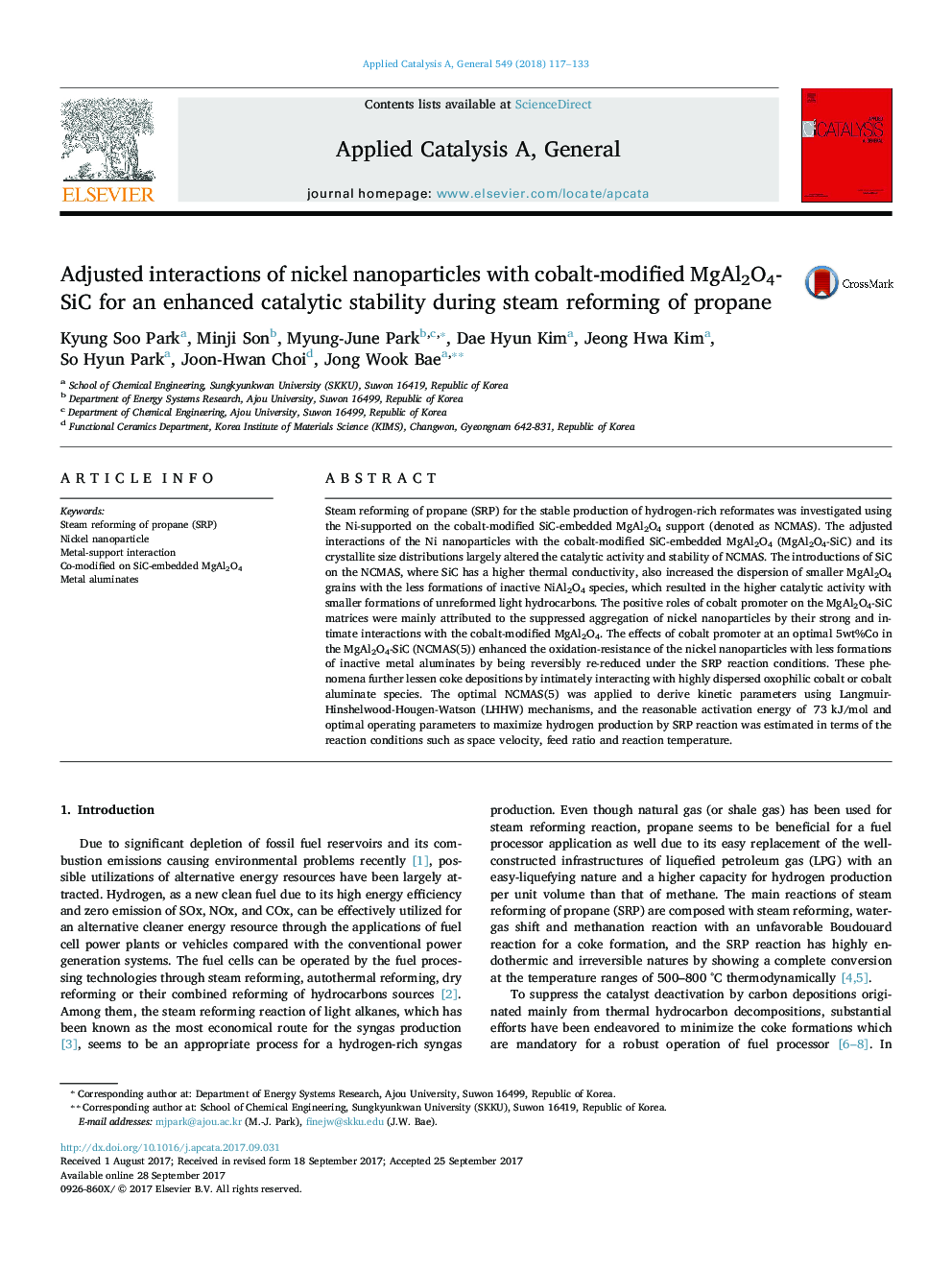| Article ID | Journal | Published Year | Pages | File Type |
|---|---|---|---|---|
| 6453201 | Applied Catalysis A: General | 2018 | 17 Pages |
â¢Steam reforming of propane (SRP) was studied over the Ni-supported on Co-modified MgAl2O4@SiC (NCMAS).â¢Adjusted interactions of Ni nanoparticles largely altered the activity and stability.â¢Cobalt promoter showed the suppressed Ni aggregation with intimate interactions with CMAS support.â¢Kinetic parameters using LHHW model were properly derived for SRP reaction.
Steam reforming of propane (SRP) for the stable production of hydrogen-rich reformates was investigated using the Ni-supported on the cobalt-modified SiC-embedded MgAl2O4 support (denoted as NCMAS). The adjusted interactions of the Ni nanoparticles with the cobalt-modified SiC-embedded MgAl2O4 (MgAl2O4-SiC) and its crystallite size distributions largely altered the catalytic activity and stability of NCMAS. The introductions of SiC on the NCMAS, where SiC has a higher thermal conductivity, also increased the dispersion of smaller MgAl2O4 grains with the less formations of inactive NiAl2O4 species, which resulted in the higher catalytic activity with smaller formations of unreformed light hydrocarbons. The positive roles of cobalt promoter on the MgAl2O4-SiC matrices were mainly attributed to the suppressed aggregation of nickel nanoparticles by their strong and intimate interactions with the cobalt-modified MgAl2O4. The effects of cobalt promoter at an optimal 5wt%Co in the MgAl2O4-SiC (NCMAS(5)) enhanced the oxidation-resistance of the nickel nanoparticles with less formations of inactive metal aluminates by being reversibly re-reduced under the SRP reaction conditions. These phenomena further lessen coke depositions by intimately interacting with highly dispersed oxophilic cobalt or cobalt aluminate species. The optimal NCMAS(5) was applied to derive kinetic parameters using Langmuir-Hinshelwood-Hougen-Watson (LHHW) mechanisms, and the reasonable activation energy of  73 kJ/mol and optimal operating parameters to maximize hydrogen production by SRP reaction was estimated in terms of the reaction conditions such as space velocity, feed ratio and reaction temperature.
Graphical abstractDownload high-res image (169KB)Download full-size image
